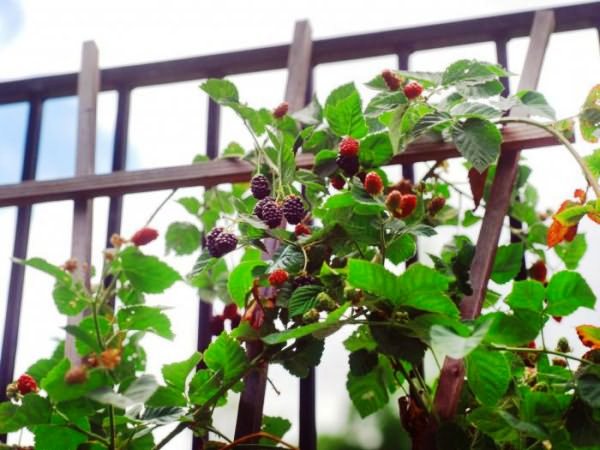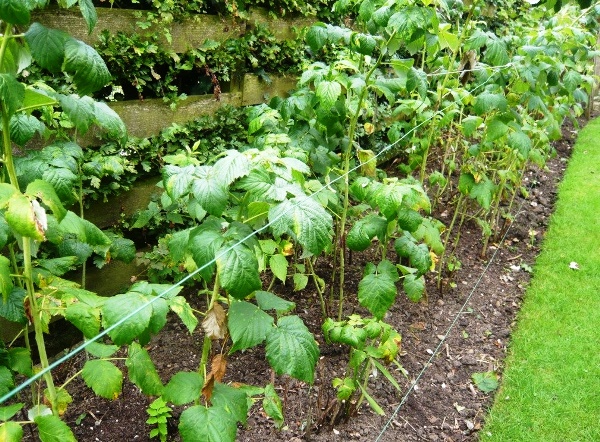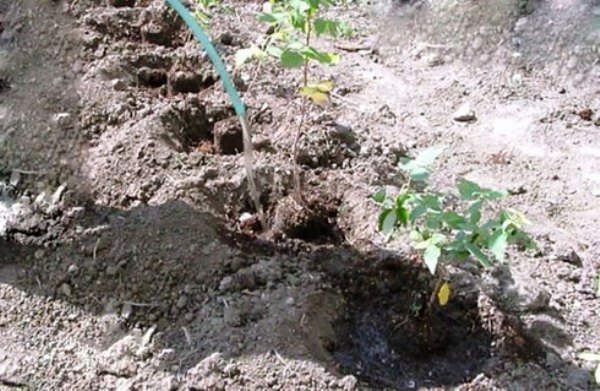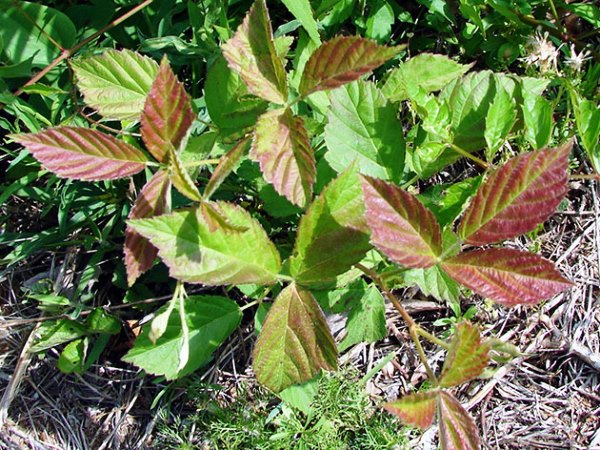Is it possible to plant raspberries next to blackberries
Content
Features of growing raspberries and blackberries
Blackberries are planted in open areas because they need a lot of sunlight, however, their shoots become tough and brittle as they mature, they can suffer from strong winds. To prevent this from happening, it is better to place the plantings away from windy places.
It is not always possible to find in the country an open, elevated place protected from the wind with a deep occurrence of underground waters, so blackberries are planted most often, like raspberries, along the fence. Both of these crops need a lot of moisture for comfortable growth, because wide large leaves evaporate a lot of it from their surface. But if swampiness and stagnation of water occur at the level of the roots, then the lack of air flow to them will immediately affect the growth of the bushes. Therefore, both of these crops with berries similar in structure should be placed where groundwater does not occur more than one and a half meters from the surface. And you need to water so that the roots do not experience a lack of moisture, especially during the fruiting period, but the soil should be light enough so as not to retain water.
Raspberries, like blackberries, can suffer from weeds, so weeding, loosening the soil are mandatory moments in caring for them. You can mulch the ground around the bushes, this will not only prevent weeds from growing, but will allow you to water the plantings less often.
In addition, both of these berry crops respond well to nitrogen fertilization. If you use humus or compost as mulch, then each watering will send a portion of fertilizer to the roots. They say that it is difficult to overfeed raspberries, it is advised to feed them during or immediately after flowering. Blackberries will also delight you with large sweet berries if they have enough nutrition, although experts do not recommend being particularly zealous in this matter. The blackberry needs to be planted in fertilized soil, and then fertilized every few years. An exception can be made for depleted sandy soils. Such soil is initially made heavier with loam, compost, humus or complex fertilizers are applied, and then the plants are fed at the beginning of flowering.
Both crops in the second half of summer should not be loaded with fertilizers, especially nitrogen fertilizers, otherwise you can provoke an extension of the growth period, then they will not have time to prepare for winter.
It is better to feed raspberries again in the fall so that the fruit buds of the next harvest develop well.
These crops are also related by the fact that most of the traditional varieties give a lot of shoots and branches, so you have to thoroughly thin out the bushes during the obligatory pruning. In raspberries, old shoots are cut out, on which the number and size of fruits decreases, and blackberries generally require replacement of shoots - each shoot bears fruit once, in the second year of life. Therefore, in the fall, the branches that gave fruits this year are completely cut out, and only those that have grown next to them in the current year are left.
Blackberries with their thorns, like prickly raspberries, make it difficult to care for them and harvest, therefore it is recommended to plant them in rows at a distance of at least 2 m, and between the plants you can leave 40-50 cm. It is very convenient to limit the rows with trellises, on which in summer you can fix shoots that bend under the weight of the berries. Bushes with annual pruning should not be allowed into the aisles, let them grow better next to each other, and their density will also have to be adjusted during the pruning process.
Blackberries and raspberries have common enemies, which can be fought with only one method. If you do not allow thickening of the bushes, then there will be less threat of pests or diseases. To prevent the appearance of these troubles, you need to make sure that the weeds do not make their way even into the aisles. It is useful to periodically spray the greens with infusion of nettle or horsetail. Infusions of ash or tobacco scare away aphids and some other disease carriers well. Of course, there are special preparations that can get rid of most pests, but summer residents prefer to use less harmful means, although they are less effective. It is very important not to allow the plants to be shaded, and if they grow densely, they shade themselves.
An important factor in healthy planting is not only healthy planting material, the choice of which must be taken very seriously. Here predecessors and neighborhood matter. So you can't plant these crops after apple trees, potatoes, tomatoes, eggplants, strawberries. It is advisable that they do not grow nearby either, this will have a bad effect on the health of the bushes, which means the harvest of vitamin berries.
Can I sit next to
Since summer cottages usually limit the enthusiasm of gardeners with their area, you have to come up with options for compactly growing crops next to each other. It is quite possible to plant blackberries and raspberries next to each other - after all, their requirements for growing conditions are very similar. If there is a place well-lit by the sun with light nutritious soil on a hill or with a drainage system to remove excess moisture, then both of these crops will take root.
Each of them is not threatened by cross-pollination, so they will not spoil each other's quality of the crop. Most varieties of blackberries give off fruit gradually; many summer residents pick berries for 2 months or more. Special pruning of raspberries can push the time limits for harvesting almost all warm times.
Some gardeners in early spring shorten the shoots like this: they leave the longest ones, pinching them at the right height, shorten the next level by a third and the last one by half the length, the most daring cut even more. Fruiting happens this way - it begins on the highest branches, then passes the baton of fruit ripening to the lower ones.
But harvesting all summer through the thorny thorny thickets is not very pleasant. And you need to do this regularly every 2-3 days, you can not leave ripe fruits on the branches, this can lead to diseases. To facilitate maintenance and harvesting, you can choose thornless blackberry varieties.
Both cultures grow very much, planting them side by side means dooming yourself to even more serious pruning. We'll have to dig a territory limiter into the ground: a sheet of some solid material is buried to a depth of 50-60 cm (plastic, metal, roofing paper, slate can help), which will restrain the advancement of young shoots further along the site.
You can make your life easier by choosing those varieties that do not form offspring. These are black raspberries, and from the blackberry variety it is good to plant the following varieties: Loch Ness, Black Satin, Thornfree and Navajo.
Bushes of these varieties also do not have thorns, however, they can freeze out at temperatures below -20 degrees.To prevent this from happening, the branches are collected in bunches before the onset of winter and bent to the ground, if snow is not expected, then they are covered from above with hay, leaves or branches of coniferous trees.
Raspberries and blackberries may well grow side by side, and a wide variety of modern varieties of both crops will allow you to choose a combination that is convenient for the owner.
Video "Growing blackberries"
This video will tell you about the intricacies of growing garden blackberries.






